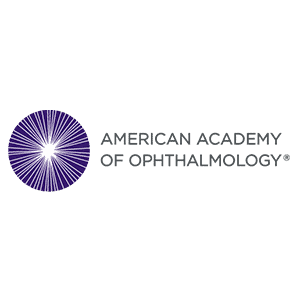Warning Signs That You May Have Glaucoma

A closer look into facts surrounding glaucoma may cause some apprehension: About 3 million people in the U.S. have the age-related condition. Glaucoma is also the second largest cause of blindness globally. Plus about 50% of Americans have the disease and are undiagnosed, according to the CDC.
Therefore, some people with glaucoma won't know anything is wrong until they experience vision problems or pain. High intraocular pressure on the optic nerve leads to the glaucoma, which affects the vision peripherally.
Assistant professor of ophthalmology at UT Southwestern Medical Center and AAO spokesman Shivani Kamat, M.D. commented, "It's virtually always quiet." When asked about their own vision loss, "many individuals don't realize it until they've lost over 50 percent."
According to Thomas Brunner, president and CEO of the Glaucoma Research Foundation, one of the reasons why peripheral vision loss is so stealthy is that our brains have a tendency to "fill in" the missing pieces of imagery.
What Eye Assessments Typically Include
A standard eye checkup with either an ophthalmologist or an optometrist can help you prevent further vision problems. Among these assessments are checks for:
- Damage to the optic nerve: During the exam, the doctor dilates the pupils with eye drops so they can review the optic nerve and retina.
- Intraocular pressure: or the internal pressure of the eye, which leads to optic damage. This pressure increases if fluid builds up in the eyes, regardless of the reason. Several tools are available to check for the abnormality. For example, a quick blast of air over the eye’s surface may detect this type of pressure. While some people have seemingly high pressure, however, they may never develop glaucoma.
- The peripheral vision: checking for blind spots or gaps in the vision.
In some instances, people without glaucoma may still need further testing, as their eye pressure or the appearance of the optic nerve warns of the later development of the condition.
Open-Angle Glaucoma vs. Closed-Angle Glaucoma
Open-angle glaucoma is the most prevalent type of glaucoma. It results from increased intraocular pressure.
What is sneaky about the condition is that it does not impact the central vision immediately - the part of the vision which is required for reading and many other everyday activities. This does not happen until the disorder reaches a severe stage.
However, some cases of closed-angle glaucoma, a less frequent form of the condition, might present themselves with sudden and severe symptoms.
Closed-angle glaucoma is also deceptive. While the drainage canal apertures may look normal at the front of the eye, the iris (or colored part of the eye) closes down the holes, either completely or partially.
Therefore, this type of glaucoma often develops gradually and, at first, without apparent symptoms. Any evidence of optic nerve damage is usually discovered during a routine eye exam.
Why Scheduling Regular Eye Exams Is Important
Therefore, the best way to identify most early indicators of glaucoma, along with other eye disorders, is to schedule regular eye exams.
Moreover, the United States Preventive Services Task Force has determined that glaucoma screening research needs to be expanded as well.
Regular eye checkups beyond age 40 are also recommended by the American Academy of Ophthalmology. The Association advises annual or biannual checkups for everyone over 65.
However, physicians may recommend more frequent or earlier checks for those at high risk. For example, glaucoma is more common in those over the age of 40, especially in people of African descent. According to the CDC, African Americans have a much greater risk of developing glaucoma than caucasians. It also notes that diabetes and a family history of glaucoma are additional risk factors.
Thomas Samuelson, M.D., an eye surgeon and associate professor of ophthalmology at the University of Minnesota, says, "We normally inform patients that if they do have a family history, [particularly in] a parent or sibling, their chance of having glaucoma may be 10 times higher than if they did not."
When glaucoma worsens, people lose their peripheral ability to see, which can lead to problems with descending stairs to driving. Some may lose their central vision, which is permanent.
Although doctors admit that glaucoma cannot be cured, most patients with the condition will not become blind if they receive the proper therapy.
When to See an Eye Doctor Immediately
In some cases, the obstructions may develop quickly which causes the ocular pressure to rise drastically. In this case, the condition is considered a medical emergency and is defined as acute closed-angle glaucoma. Symptoms of the condition include:
- Headache
- Flushed eyes
- Irreparable eye pain and discomfort
- Vision problems and blurriness
- Seeing rainbows and halos
- Nausea and vomiting
If you experience any of the above symptoms, you need to seek medical attention for your eyes without delay.
Treating Open-Angle Glaucoma
If it is determined that you have open-angle glaucoma, the doctor normally prescribes eye drops to reduce the pressure and pain on the eyes.
Laser treatments are the usual primary therapy as well, and may need to be repeated periodically. This may eliminate the need for eyedrops in certain people. Also, some doctors will prescribe the injection of a drug, which can mitigate the problem for about six months.
Treating Problems with Drainage
In some cases, the surgeon may need to open the eye’s drainage channels or insert a small stent if a non-invasive treatment fails. These procedures may also be performed with cataract surgery. If the thicker and cloudy lens (cataract) behind the iris is removed, it can help with the leakage problem. Drainage may be improved, as well, by using a laser to make a tiny hole in the iris.
Contact Cohen & Laser Vision Center Today
Getting an eye exam for possible glaucoma can help you maintain your vision and get the help you need. Contact Cohen & Laser Vision Center now and schedule an appointment today.






